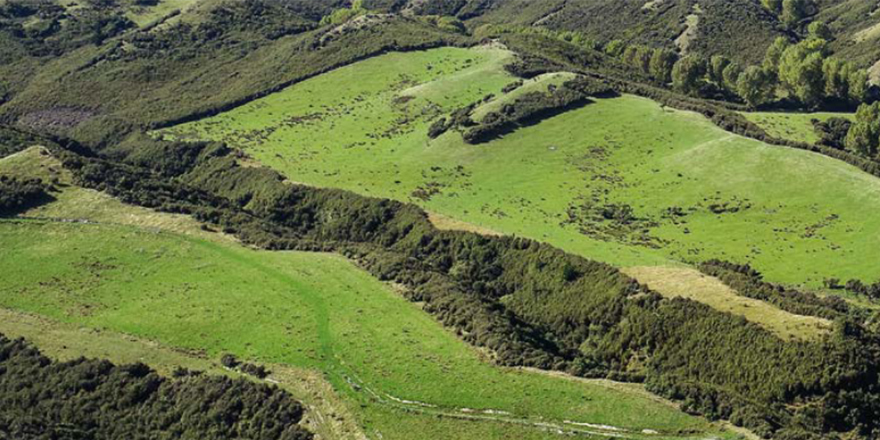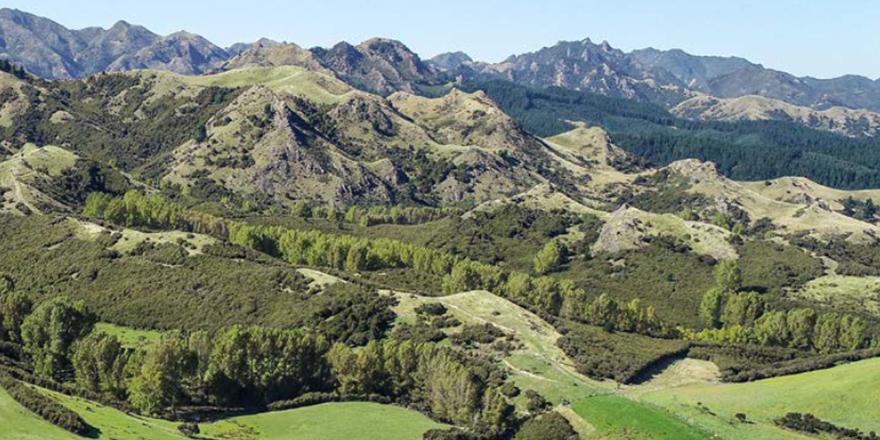
By Sam Mander, Environmental Consultant, The AgriBusiness Group and 2022 Kellogg Scholar.
The article is reprinted from the Real Estate Magazine, with permission from the publisher The Real Estate Institute of New Zealand.
Indigenous forest land and the carbon sequestration opportunity for New Zealand landowners always seems to be downplayed — deemed too expensive, too hard, or inferior compared to exotic forests.
Sam Mander, Environmental Consultant at The AgriBusiness Group, debunks this myth and provides an understanding of how to identify the indigenous carbon opportunity.
Kanuka, manuka, regenerating native vegetation or planted native restoration sites hold a significant opportunity for carbon sequestration. But fundamentally, where the opportunity really lies in this space is where a natural seed source is present.
Land with naturally regenerating indigenous forest requires no capital input, eliminating the usual barriers of expensive planting regimes and delicate forest management.
We don’t want to discourage the planting of new native areas, particularly around areas of ecological significance, but to capitalise on the low hanging fruit, landowners must take advantage of existing native seed stocks and develop these areas to accelerate the growth of regenerating New Zealand’s indigenous landscape.
Determining eligible indigenous forest land
Indigenous forest areas are eligible to enter the Emissions Trading Scheme (ETS) if they meet the Ministry for Primary Industries (MPI) forest land definition.
What is carbon sequestration?
Carbon sequestration is the process by which carbon dioxide is absorbed during photosynthesis, and is stored as carbon in biomass (trunks, branches, foliage, and roots). Source: nzfoa.org.nz

MPI’s forest land definition states that forests must:
- Reach at least one hectare in area
- Reach at least 30 metres average width
- Have species that can grow five metres high
- Have the potential to reach 30% canopy cover
- Meet the above as of 1 January 1990 or after
- Have met all of the above as of 1 January 1990.
If a landowner has property that has manuka, kanuka, mixed podocarps, or areas they are thinking of planting native species (including in riparian zones — the interface between land and a river or stream) carbon credits can be earned if the areas meet the forest land definition.
One carbon credit is equivalent to one tonne of carbon sequestered; therefore, the tonnes of carbon sequestered by the forest each year are the total number of annual carbon credits available.
Tonnes of carbon are calculated on a per hectare basis, and the value of one tonne is equal to the current carbon price ($76/NZU/tonne).
You’re typically looking for a natural seed source present with conditions that favour natural dispersion, growth and succession. Any native species can be included if it has the potential to reach five metres in height at maturity.
The most common example of opportunity is regenerating kanuka and manuka forest land areas.
To earn carbon credits, landowners need to electronically map the land to certain standards and capture aerial imagery to prove the forest area meets the forest land definition.
The value of credits a landowner can receive and for how long they will receive them largely depends on the species growing on the land.
The MPI carbon lookup tables determine that indigenous forests can earn carbon credits from sequestration in the first 50 years of growth.
How to assess the native forest area
This can be a difficult process for landowners; fortunately, professional forestry companies and environmental consultants like myself have developed methods for assessing forest land definition and providing the result of the assessment to MPI for a successful ETS application.
“The value of credits a landowner can receive and length of time they will receive them largely depends on the species growing on the land.”
Depending on the forest scenario, we use a combination of ground vegetation sampling, plotting, and integrated drone imagery to determine and prove this. In most cases, this is where an expert may need to be involved.
A recent example is a property with an indigenous natural seed source. An assessment found it had 35 hectares of post-1989 indigenous forest land that had regenerated since 1990, with a forest age of approximately 17 years.
Forest species were predominantly kanuka, manuka, among other mixed podocarps. Carbon credits can be claimed for the remaining 33 years of carbon sequestration.
Economically speaking, at the current carbon price, this equated to an average annual cash flow of $16,000, or cumulatively, $539,000. In summary, the opportunity to earn carbon credits for indigenous forest land is significant, particularly where a natural seed source is present.
The property mentioned above is among many that we have worked on which provides a great example of the type of property that is common around rural New Zealand and one that holds value from indigenous carbon sequestration.
Planting trees to offset carbon isn’t a silver bullet against climate change.
However, carbon credits allow landowners to balance the scales for those unavoidable emissions on the path to reduction and has potential to generate financial benefits for those who wish to engage in these sustainable practices.
Download Sam’s report Carbon Sequestration Potential.


























